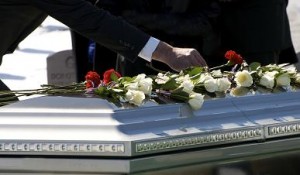Planning a funeral seems like a difficult task. With all different types, shapes, sizes, flower placement styles and cremation burial options available it can seem impossible to select a memorial that is meant to enshrine your loved one’s memory for eternity. In the next several sections, different types and styles of cemetery monuments have been described that should make selection during a difficult time easier.
Companion Monuments
Companion headstones usually sit on a family plot and are meant to memorialize more than one person. While these monuments are typically meant for two people, they can be enlarged to allow for the names of more family members.
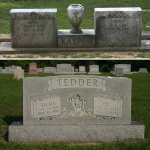 Companion monuments can come in an upright or flat style. We will mention all the flat, slanted and bevel styles further down in this article. When thinking of purchasing this monument, consider whether or not you would like to be able to place flowers on the headstone.
Companion monuments can come in an upright or flat style. We will mention all the flat, slanted and bevel styles further down in this article. When thinking of purchasing this monument, consider whether or not you would like to be able to place flowers on the headstone.
There are many flower options that exist for companion monuments. One such option is an interconnecting vase between the two sides of the companion headstone. Another option is to have one large double monument with flower vases on either side. There can also be an inlaid space at the top of the monument that allows for flowers to be easily placed on top.
A final option could be a monument with no designated space for flowers and one could purchase a wire flower saddle. The wire flower saddle straddles the cemetery monument at the top and allows for easy flower placement on an upright headstone.
Individual Monuments
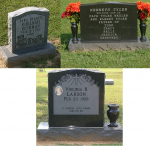 Individual monuments are meant to be memorials for one person. As with companion headstones, individual markers come in flat or upright styles and have flower placement options.
Individual monuments are meant to be memorials for one person. As with companion headstones, individual markers come in flat or upright styles and have flower placement options.
There can be two separate vases along either side of the individual marker, an indented space can be made available at the top of the headstone, or a wire flower saddle can be placed upon the individual gravestone.
Individual headstones have space on them for a design, the name and dates of your loved one.
Bevel, Slant, and Flat Monuments
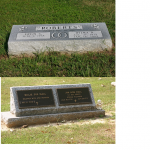 Bevel and slant cemetery monuments are meant to sit at the head or foot of a grave. A bevel monument is flat and a slanted monument sits upright at a slight angle. The design of the bevel or slant monument is to allow one to read the marker when approaching the grave memorial.
Bevel and slant cemetery monuments are meant to sit at the head or foot of a grave. A bevel monument is flat and a slanted monument sits upright at a slight angle. The design of the bevel or slant monument is to allow one to read the marker when approaching the grave memorial.
These headstones can be small enough for just one name or large enough to be a companion monument. What makes the slant and bevel headstone different from a traditional flat marker is that a base is located beneath the monument.
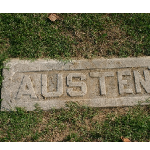 This allows the marker to be lifted, making it more visible and also keeping lawnmowers back. Flower vases can also be placed at one side of these markers to allow for convenient flower placement.
This allows the marker to be lifted, making it more visible and also keeping lawnmowers back. Flower vases can also be placed at one side of these markers to allow for convenient flower placement.
This type of monument is large enough to put an engraving of a small design, as well as the full name and dates of your loved one.
Flat markers, like slanted and bevel cemetery monuments can be small enough for just one name or enlarged to be a companion style.
They are similar to slant and bevel styles except that there is no base located beneath the monument. They are at ground level allowing lawnmowers to mow over them.
Continue reading “Cemetery Monument and Headstone Options” »
 A green, natural or eco-burial is a burial that allows the body and the burial grounds to stay as natural as possible. No embalming, concrete vaults, or toxins are used. Bio-degradable caskets, shrouds or blankets are used instead of traditional caskets, urns or vaults.
A green, natural or eco-burial is a burial that allows the body and the burial grounds to stay as natural as possible. No embalming, concrete vaults, or toxins are used. Bio-degradable caskets, shrouds or blankets are used instead of traditional caskets, urns or vaults.

 This is generally not one of the first things that someone in mourning will think of. In many cases the family and and friends do not want their loved one’s profile on Facebook floating around in cyberspace. In this article we will walk you through the process of deleting, memorializing, or deactivating their profile.
This is generally not one of the first things that someone in mourning will think of. In many cases the family and and friends do not want their loved one’s profile on Facebook floating around in cyberspace. In this article we will walk you through the process of deleting, memorializing, or deactivating their profile.